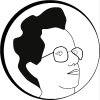
Deafness-Related Issues for Windows 95Microsoft sponsored conference
----------------------------------------------------------------
TFA Special Report: Microsoft Accessibility Conference
Thursday, July 27, 1995
----------------------------------------------------------------
Microsoft Accessibility Conference Report:
Deafness-Related Issues for Windows 95
by Norman S. Williams
Technology Assessment Program, Gallaudet University
INTRODUCTIONMicrosoft Corporation sponsored a conference for applications developers July 21-23 to review the accessibility features of Windows 95. I was fortunate to be able to attend this conference. I was the only deaf person there from outside Microsoft representing deaf issues, and thank Gallaudet's Grants Incentives Program for sponsoring my travel to this important meeting. Microsoft wanted to receive input from the disabled community to improve the access features of its just-released Windows 95 operating system. Microsoft was especially interested to learn from accessibility developers how to achieve the best interface design between the Windows 95 operating system and the accessibility applications. They have logged complaints from disabled consumers. The suggestions may be included in the next accessibility updates that should occur quarterly. Microsoft also gave programming lectures with the audience to teach developers to write good accessibility software. (Microsoft employees celebrated the release of Windows 95 while we were in the conference. Great news!) DEAF-RELATED ATTENDEES
MAJORITY ISSUESThe blind group was in the majority. They are very concerned that some blind computer users will be removed from their jobs when the Windows 95 environment must be adapted in the workplace. There is a lot of work to do in the blind area. The blind users will have to purchase third party accessibility software. Microsoft will provide the standard interface on the operating system (OS) level. An "engine" is needed to "talk" to the OS to acquire the screen information to be spoken to the blind user. Microsoft needed input before making the final interface. Microsoft said that there is a company-wide policy to make new products accessible. They and the independent vendors showed interest to use OLE as the interface for accessibility. There were two days worth of technical discussion on programming, which will not be reviewed here. There was a good discussion of a possible independent agency to grant an ACCESSIBLE logo to software products if all accessibility functions are met. For example, computer users with disabilities could look for the logo on multimedia CD-ROMs with faith that they would be captioned. (This was just discussed; there is no agency that does this at this time.) Major new features can take as long as two years before they show up on the market. Since there are deaf supports built in, it is not likely that deaf consumers will need to purchase separate accessibility software, other than a TTY program for V.18, if and when a V.18 modem comes out. There were few issues to be discussed. Most of the deaf issues are minor compared to the blind needs. However, Microsoft assured me that deaf issues will be looked at seriously. WHAT'S NEW IN WINDOWS 95 OF INTEREST TO DEAF PEOPLESound Sentry: It will flash in three different ways when a PC sound is produced. The three ways are: flash top bar of application program, flash entire application window, or flash entire screen. It also works for DOS programs whether it is windowed or in full screen mode. Show Sounds: It provides a caption interface to Microsoft movie player using .AVI file formats. Since there is no demo file for the general public, this is still untested. The Windows 95 users will find this is just a switch, and they will not see any benefit for while. The switch will not be used by other movie players such as QuickTime, MPEG, etc. This is also for audio only file (.WAV). Kids Software Unit should have a product on the market next year with captions built in. The groups developing new versions of products like Microsoft Encarta are now aware of accessibility issues and are committed to adding captions. It is unclear if Microsoft or a third party vendor will fill in the gap. TTY Hook: There is a hidden standard modem hook (support) for V.18 (TTY and other international protocols built into standard modems) General users will not find the interface. Because there is no V.18 product on the market, this remains untested. The accessibility option of Windows 95 will be installed on all computers as default. This allows us to use the option on any PCs we use. This is good news for public access lab users. WHAT'S BEEN DISCUSSED AND MAY BE IN NEXT UPDATE
WHAT'S NOT DONE
E-MAIL ADDRESSESThis section used to have E-mail addresses of the following people. Those E-mail addresses were removed because they invite spammers and become obsolete over time.
Last update date: 1995 Oct 7 |
DonationDid this Web site help you? If yes, you may want to consider making a donation to me. When making a donation, please tell me what additional information could I add to the Web site, to make it even more helpful for you and people like you. |